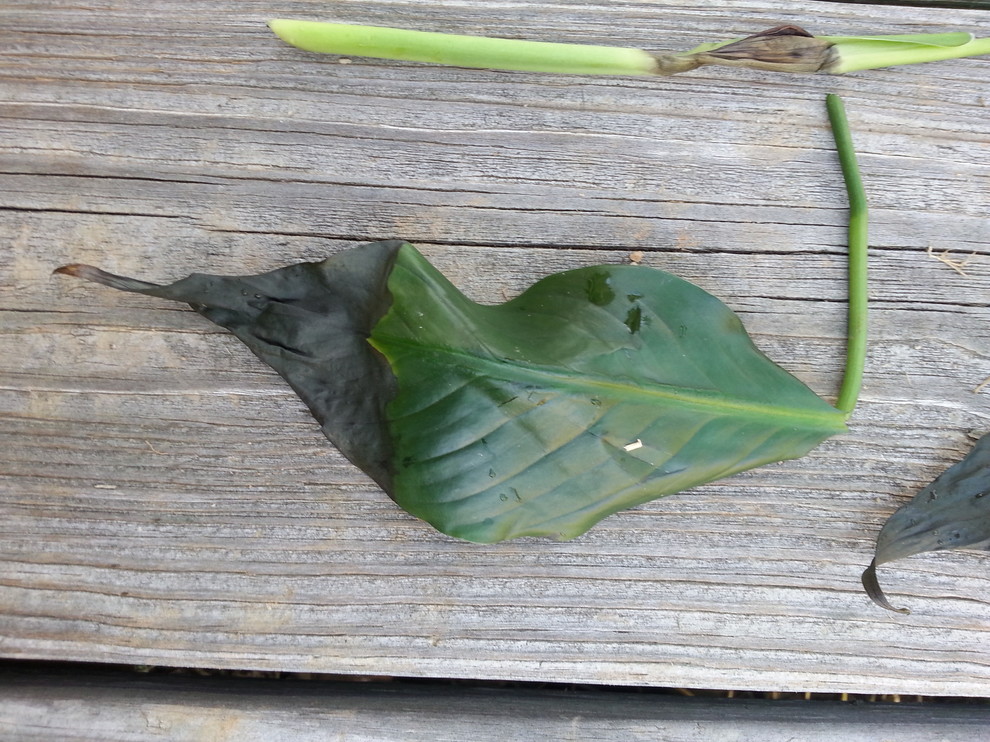Peace lilies are popular houseplants known for their glossy green leaves and beautiful white flowers. However peace lily leaves can sometimes develop unsightly black spots which can be alarming for plant owners. In this article, we’ll explore the various causes of black spots on peace lilies and provide solutions to treat and prevent them.
What Causes Black Spots on Peace Lily Leaves?
There are several potential causes of black spots on peace lily leaves
-
Overwatering – Excess moisture around the roots can lead to root rot and damaged leaves. The leaves may turn black and mushy from rot.
-
Underwatering – If the soil dries out too much between waterings, the leaves can shrivel up and turn black.
-
Poor water quality – Tap water containing chlorine, fluorides, or dissolved salts can burn the leaf tips and cause black spots.
-
Pests – Insects like spider mites, mealybugs, and thrips can all feed on peace lily leaves, leaving behind black splotches and spots.
-
Diseases – Fungal infections like leaf spot, botrytis blight, and root rot can lead to blackened leaves.
-
Cold damage – Exposure to very cold drafts or temperatures can damage the leaves, turning them black.
-
Sunburn – Too much direct sunlight can scorch the peace lily’s leaves, causing brown-black spots and edges.
How to Treat Black Spots on Peace Lilies
If your peace lily has developed black spots, here are some treatment options:
-
Adjust watering – If overwatering, allow the soil to dry out more between waterings. If underwatering, water more frequently.
-
Treat pests – Wash leaves with water to dislodge pests. Apply neem oil or insecticidal soap as needed.
-
Treat diseases – Remove affected leaves. Apply fungicides for fungal diseases. Repot if root rot is present.
-
Leach soil – Flush soil with clean water to remove any built-up salts or chemicals.
-
Move plant – Place peace lily in a location away from cold drafts, heat vents, or direct sun if needed.
-
Increase humidity – Use a humidifier or pebble tray to provide more moisture if the air is very dry.
-
Prune leaves – Cut off any severely damaged, blackened leaves to improve the plant’s appearance.
How to Prevent Black Spots on Peace Lilies
Here are some tips to keep your peace lily healthy and prevent black leaf spots:
-
Water properly – Allow soil to dry out slightly between waterings. Water deeply until it drains from bottom.
-
Use filtered water – Chlorine and fluorides in tap water can damage leaves over time.
-
Keep humidity up – Peace lilies prefer 40-60% humidity. Group plants together or use a humidifier.
-
Avoid direct sun – Place peace lily in bright, indirect light to prevent leaf scorching.
-
Promote air circulation – Keep the area around the peace lily free of clutter to allow air movement.
-
Inspect regularly – Check leaves and stems for pests. Treat promptly before they spread.
-
Clean leaves – Gently wipe leaves every few weeks to remove dust and debris.
-
Don’t overfertilize – Excess fertilizer can burn the leaf tips. Follow label directions.
-
Use well-draining soil – Repot in a soil mix that drains easily to prevent soggy roots.
-
Monitor temperature – Keep peace lily away from cold drafts, vents, and other temperature fluctuations.
With proper care, most peace lilies can thrive for many years without developing black spots on their leaves. Check the plant regularly and address any issues promptly. Maintaining ideal growing conditions will keep the foliage looking fresh and spot-free.

Inspect the peace lily flowers and roots
Root rot can be a silent killer.
You may need to remove your peace lily from its pot and inspect its delicate roots.
A healthy root system should be firm and white, so remove any mushy, black or smelly roots with clean gardening scissors.
If the peace lily roots are damaged, it might be time to propagate it and start fresh.
You should also check if its potting soil should be changed or if it’s time to repot your peace lily.
Check for pests and fungal infections
Regularly inspect your peace lily for pests and fungal diseases.
Look for unwelcome visitors under its lush green foliage and along the stems.
Address any infestations with insecticidal soap or a homemade solution.
How do you fix black leaves on a peace lily ?
FAQ
How do you fix black spots on leaves?
How to Control Black Spot: Once black spot becomes active, the only way to control the disease and stop its spread is with an effective fungicide. GardenTech® brand’s Daconil® fungicides offer highly effective, three-way protection against black spot and more than 65 other types of fungal disease.
How do you get rid of mold on peace lily soil?
Only water your plants when the top two inches of soil feel dry. Cinnamon. After you’ve scraped up the mould, sprinkle the soil with cinnamon. Cinnamon is a natural fungicide, so helps prevent mould growing.
What does an overwatered peace lily look like?
Your peace lily plant’s roots should never be waterlogged or overwatered. Signs of overwatering include yellow leaves, brown leaf tips, and a generally droopy, unhealthy looking plant. To fix this, allow the peace lily plant to dry out before the next watering.
What to do when peace lily flower turns black?
I would cut off the spathes, or even the whole flower stem at its base (more will arrive later anyway), trim off any damaged leaves, inspect the compost for signs of mould growth, and to see whether its waterlogged, check the drainage holes in the pot aren’t blocked.
